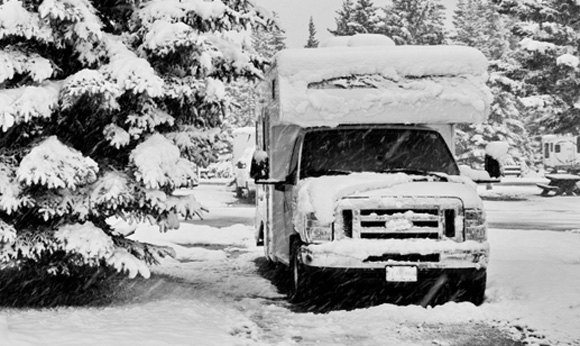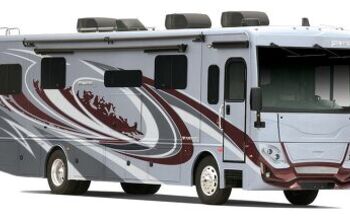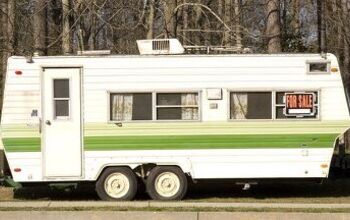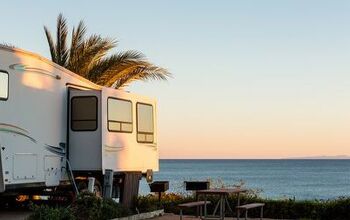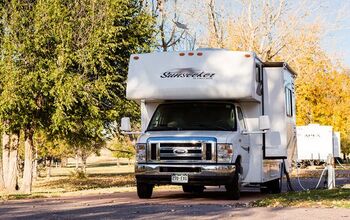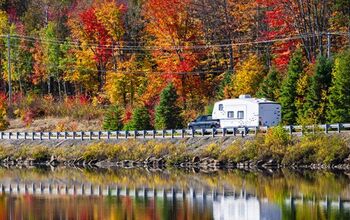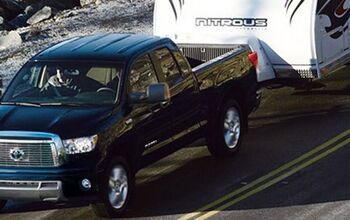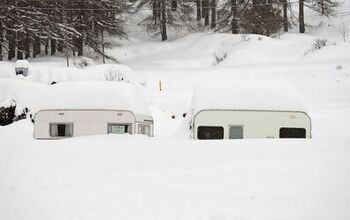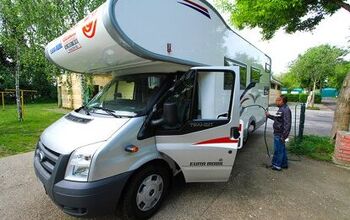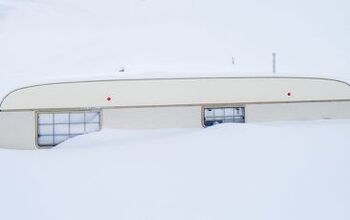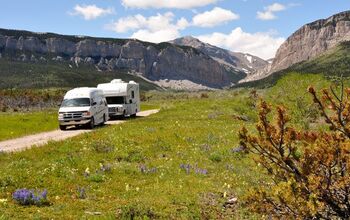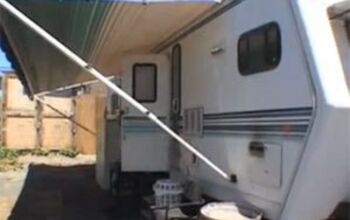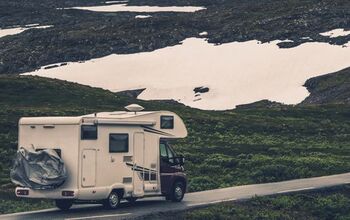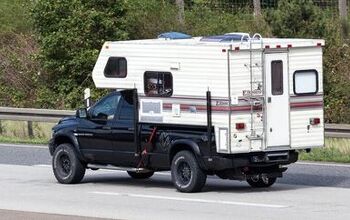DIY RV Winterizing Basics
Old Man Winter is fast approaching and for many of us that means camping season is over and it is time to look into RV winterizing.
I hate to admit it, but, at least for me, the camping season has come to an end. We even had our first real snowfall of the year. If you use a winterizing service, or store your RV elsewhere, more power to you. We keep our camper here on our farm and take care of it ourselves. What I mean by that is – I take care of it while my wife is at work. There are two basic premises to keep in mind when RV winterizing. One, you need to get all of the water out of your plumbing so that it doesn’t freeze and ruin things. And two, you want to cover it up to protect it from the elements. Let’s roll up the sleeves and get started.
Plumbing
There are two ways to go about RV winterizing your plumbing systems. You can fill up your system with RV anti-freeze, or you can blow out your pipes and leave the system dry for the winter months. Both have good results, but you need to do them right.
Pumping antifreeze into your plumbing is often a lower-cost method depending on what tools you already have. You’ll understand what I mean in a moment. To start, you need quality RV antifreeze. Make sure you have enough for your entire plumbing system. Usually you don’t have to worry about your sinks and holding tanks, because you should drain all the potable water from your RV before winter. The antifreeze isn’t cheap, so the bigger the RV, the more you’ll need. You’ll need an adapter kit to be able to pump the antifreeze into your system, too.
Blowing the plumbing out and leaving it dry is a great option for any RV, but especially smaller ones. For this, you need a compressor. Remember what I said about antifreeze may be cheaper? That’s if you don’t already have the compressor. You don’t need a huge compressor, but you do need more than a tire-inflator sized unit, too. A decent compressor, like a Dewalt 6-gallon, has a built-in regulator, which is important. You don’t need massive air pressure to blow out your pipes, but you do need volume. A bigger compressor, like the Dewalt, can provide consistent 30-45 pounds of air. The regulator is important because your pipes can’t handle a great deal of pressure. Get much above 50 pounds and you’re asking for serious trouble.
Make sure you get an air hose with your compressor if you have to buy one. You also need a blowout plug. Get one with brass fittings and the connector to attach it to your RV’s water input. These aren’t expensive and are extremely important to successfully blowing out your system. What you’re doing is lightly forcing water out of your plumbing systems, and then using the air movements to dry things out inside. This is a good way to go with your potable water, as well as waste water. If you have a bigger RV, it isn’t a bad idea to blow out your systems and then use antifreeze in the waste systems.
Covering Up
One simple step in RV winterizing is covering up your unit. It helps keep the snow off, or at least keeps it from having direct contact with your RV’s surface. Also, it protects your RV from direct sunlight, which during winter is brutally damaging to the exterior of your RV. That’s one thing people seldom thing about, but UV-light rays are just as strong during the winter, but the air is less dense, meaning UV is actually more direct. Plus, it reflects off the snow, making it even more intense. At the very least, you need to cover your RV with a heavy-duty tarp and anchor it well against blowing away, or even fluttering in the breeze. Wind whipping a tarp around can shred it faster than a cat will your brand-new curtains.
If you live it a heavier snow area, you need to consider indoor storage. A steel RV-sized carport is a great idea for year-round coverage on your own property if you don’t have a barn or garage big enough. VersaTube makes the easiest to buy and build kits to put one up and they will handle the weather with ease. You can find one in just about any size and color. Of course, if you want to build a garage or barn that is big enough, VersaTube makes those kits too.
Odds and Ends
For your electrical systems, if you’re battery-operated, you need to disconnect the battery and take it indoors for the winter. Put it on a tender to keep it actively charged. You should also make sure everything is sealed up tight, so mice and other rodents don’t get in and make a home of your valuable RV during the winter. That is a mess you don’t want to deal with in the spring and some simple RV winterizing maintenance can stop that problem before it starts.
